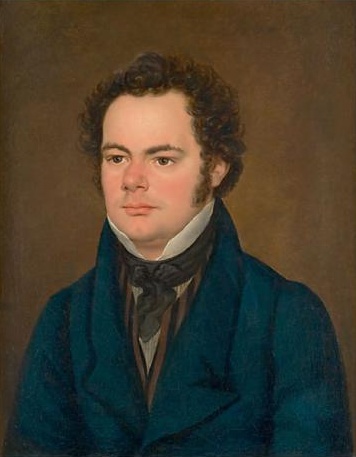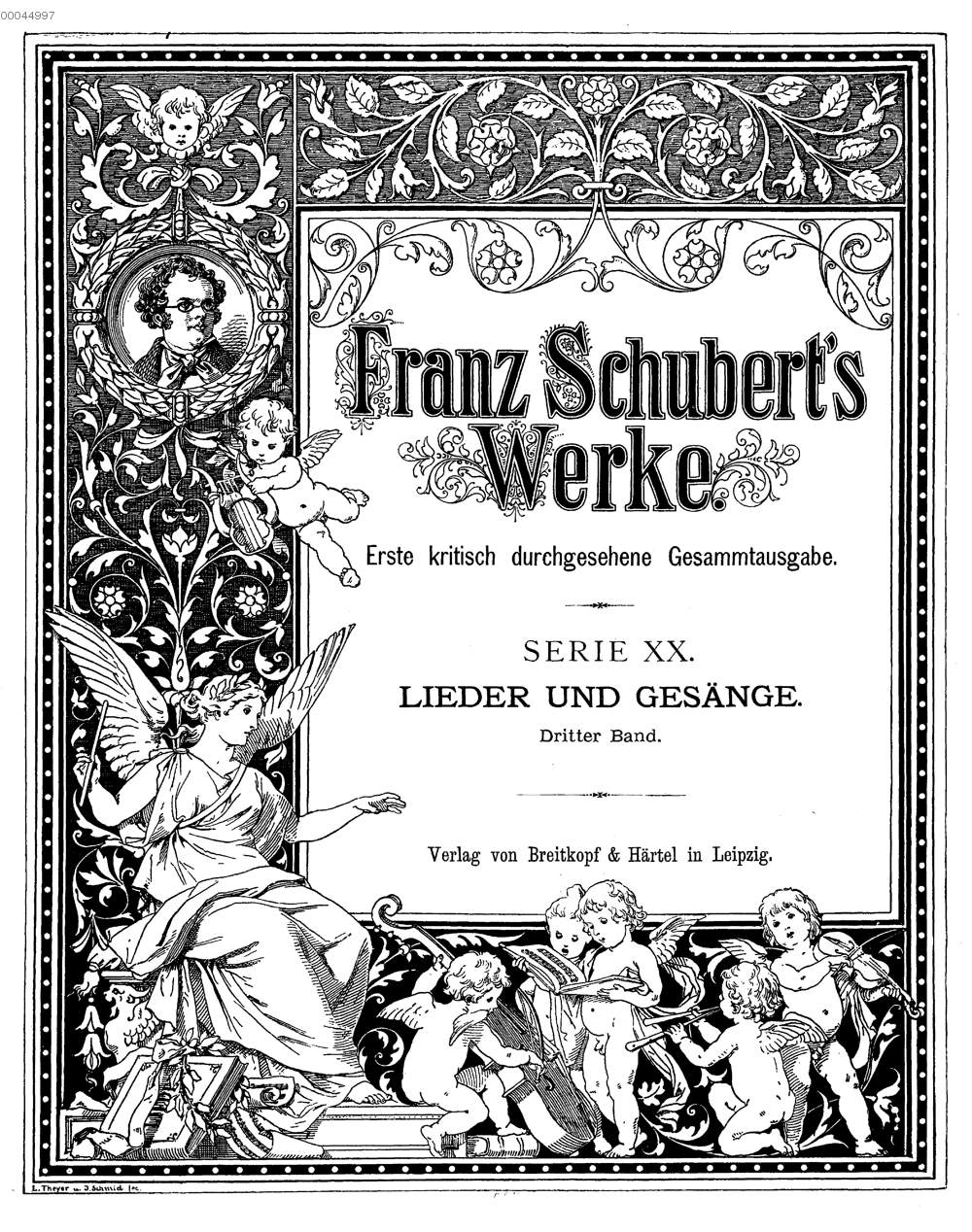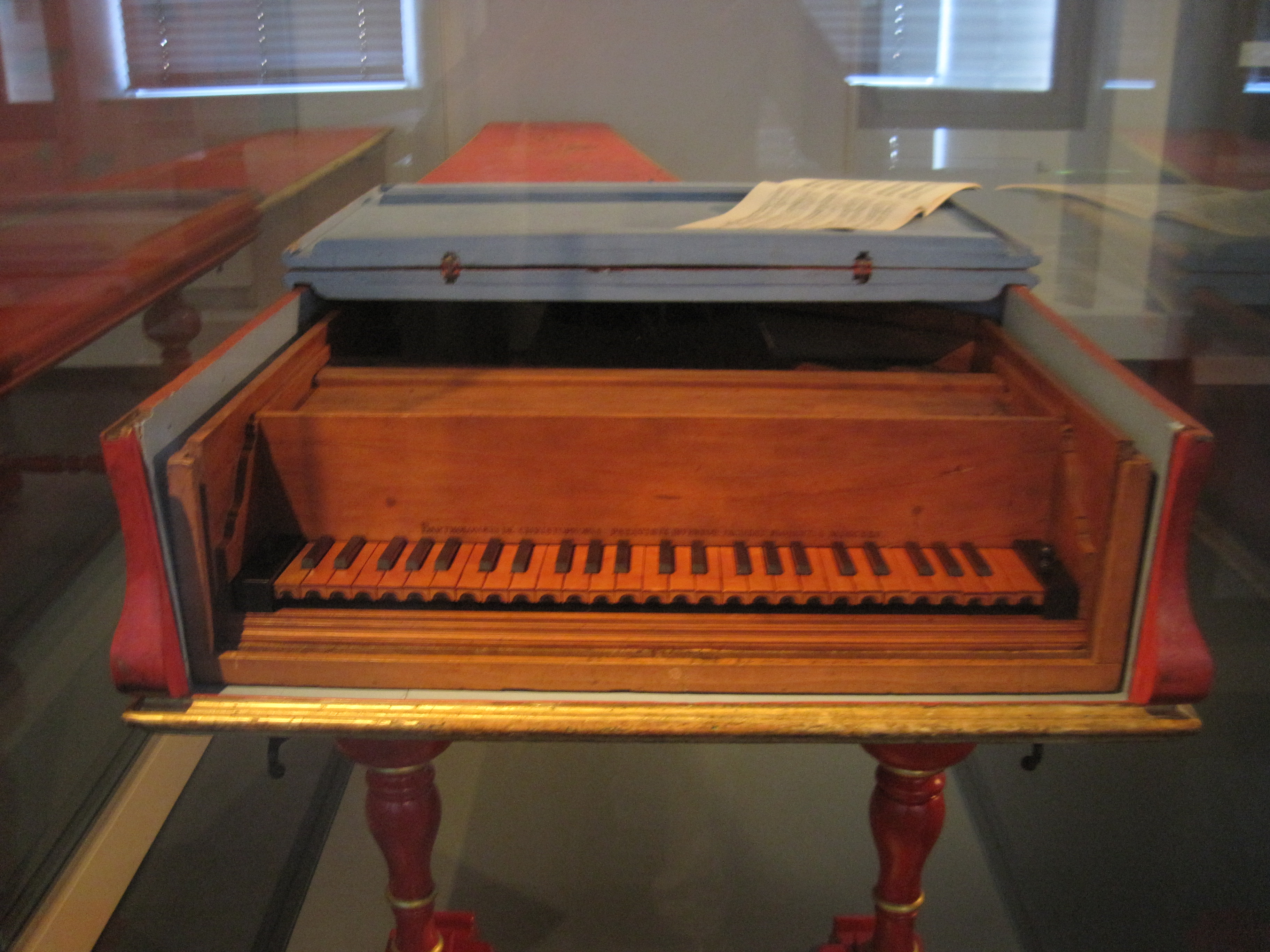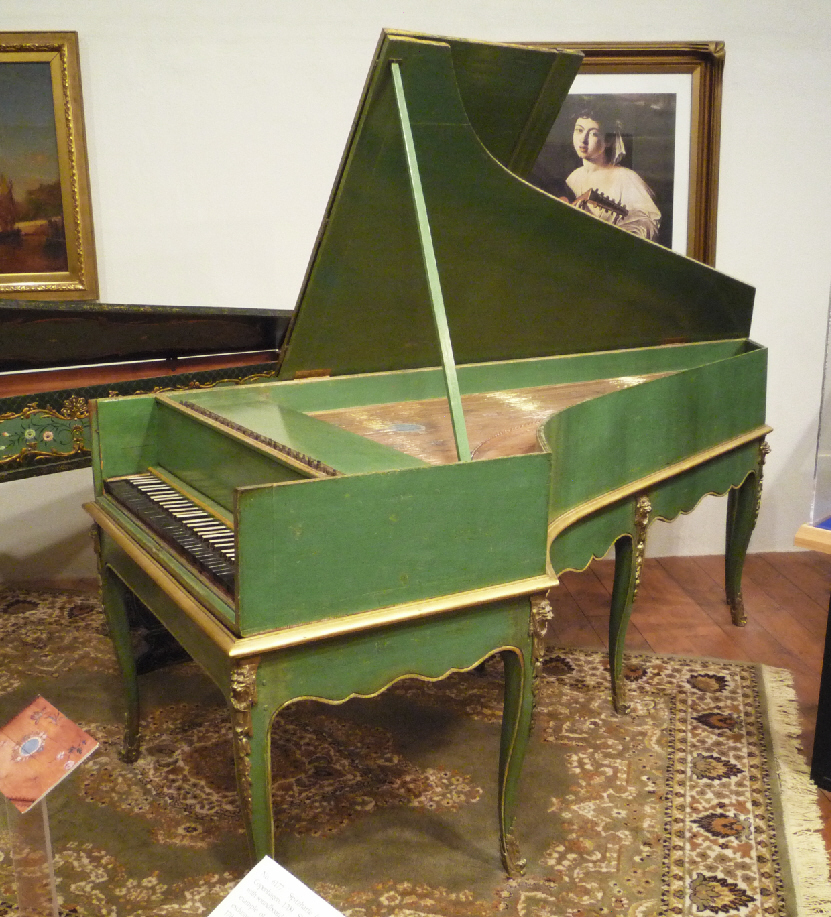|
Piano Sonata In A Major, D. 664 (Schubert)
The Piano Sonata in A major D. 664, Op. posth. 120 is a sonata for solo piano composed by Franz Schubert in the summer of 1819. Movements I. Allegro moderato A major II. Andante D major III. Allegro A major Well regarded among pianists, the "Little" A major sonata is so called to distinguish it from the hefty 1828 sonata in the same key. It is the shortest among Schubert's complete sonatas. The manuscript, completed in July 1819, was dedicated to Josephine von Koller of Steyr in Upper Austria, whom he considered to be "very pretty" and "a good pianist". The lyrical, buoyant, in spots typically poignant nature of this sonata fits the image of a young Schubert in love, living in a summery Austrian countryside, which he also considered to be "unimaginably lovely". The A major sonata is straightforward, with a dulcet melodic opening. It was the first of Schubert's piano sonatas where the sonata form as perfected by his idol, Beethoven, does not seem wrestled with; rather, i ... [...More Info...] [...Related Items...] OR: [Wikipedia] [Google] [Baidu] |
Musopen
Musopen Inc. is a 501(c)(3) non-profit organization located in Tarzana, California, launched by Aaron Dunn in 2005. It aims to "set music free" by providing music to the public free of charge, without copyright restrictions. Mission and charitable activities Musopen provides an online library of public domain music recordings and sheet music. It also raises money to finance classical music recordings which are released into the public domain. In 2008, Musopen released newly commissioned recordings of the 32 Beethoven piano sonatas into the public domain. In 2010, the site organized a fundraiser via Kickstarter to commission recordings of a larger repertoire, raising a total of $68,359, more than six times their initial target of $11,000. In July 2012, Musopen announced that the editing of the recordings was finished, after which the audio files were uploaded to its website and Archive.org. The final list of music was announced in August 2012. In September 2013, a new Kickst ... [...More Info...] [...Related Items...] OR: [Wikipedia] [Google] [Baidu] |
Schubert Thematic Catalogue
''Schubert: Thematic Catalogue of all his Works in Chronological Order'', also known as the Deutsch catalogue, is a numbered list of all compositions by Franz Schubert compiled by Otto Erich Deutsch. Since its first publication in 1951, Deutsch (abbreviated as D or D.) numbers are used for the unique identification of Schubert's compositions. 1951 edition The Deutsch catalogue was first published in London in 1951 by J. M. Dent & Sons, as ''Schubert: Thematic Catalogue of all his Works in Chronological Order, compiled by O. E. Deutsch, in collaboration with Donald R. Wakeling.'' 1978 edition: NSE VIII/4 In 1978, as part VIII Supplement / Volume 4 of the New Schubert Edition (NSE), an updated version of the catalogue was published in German. A few compositions that had been undated in the first edition received a new number (usually followed by a letter), e.g. was renumbered to . Later versions The original 1951 edition (in English) was re-issued several times, for instance ... [...More Info...] [...Related Items...] OR: [Wikipedia] [Google] [Baidu] |
Opus Number
In musicology, the opus number is the "work number" that is assigned to a musical composition, or to a set of compositions, to indicate the chronological order of the composer's production. Opus numbers are used to distinguish among compositions with similar titles; the word is abbreviated as "Op." for a single work, or "Opp." when referring to more than one work. To indicate the specific place of a given work within a music catalogue, the opus number is paired with a cardinal number; for example, Beethoven's Piano Sonata No. 14 in C-sharp minor (1801, nicknamed ''Moonlight Sonata'') is "Opus 27, No. 2", whose work-number identifies it as a companion piece to "Opus 27, No. 1" ( Piano Sonata No. 13 in E-flat major, 1800–01), paired in same opus number, with both being subtitled ''Sonata quasi una Fantasia'', the only two of the kind in all of Beethoven's 32 piano sonatas. Furthermore, the ''Piano Sonata, Op. 27 No. 2, in C-sharp minor'' is also catalogued as "Sonata No. 14", ... [...More Info...] [...Related Items...] OR: [Wikipedia] [Google] [Baidu] |
Franz Schubert
Franz Peter Schubert (; 31 January 179719 November 1828) was an Austrian composer of the late Classical and early Romantic eras. Despite his short lifetime, Schubert left behind a vast ''oeuvre'', including more than 600 secular vocal works (mainly lieder), seven complete symphonies, sacred music, opera Opera is a form of theatre in which music is a fundamental component and dramatic roles are taken by singers. Such a "work" (the literal translation of the Italian word "opera") is typically a collaboration between a composer and a libr ...s, incidental music, and a large body of piano and chamber music. His major works include "Erlkönig (Schubert), Erlkönig" (D. 328), the Trout Quintet, Piano Quintet in A major, D. 667 (''Trout Quintet''), the Symphony No. 8 (Schubert), Symphony No. 8 in B minor, D. 759 (''Unfinished Symphony''), the Symphony No. 9 (Schubert), "Great" Symphony No. 9 in C major, D. 944, the String Quintet (Schubert), String Quintet (D. 956), ... [...More Info...] [...Related Items...] OR: [Wikipedia] [Google] [Baidu] |
Schubert's Last Sonatas
Franz Schubert's last three piano sonatas, 958, 959 and 960, are his last major compositions for solo piano. They were written during the last months of his life, between the spring and autumn of 1828, but were not published until about ten years after his death, in 1838–39. Like the rest of Schubert's piano sonatas, they were mostly neglected in the 19th century. By the late 20th century, however, public and critical opinion had changed, and these sonatas are now considered among the most important of the composer's mature masterpieces. They are part of the core piano repertoire, appearing regularly on concert programs and recordings. One of the reasons for the long period of neglect of Schubert's piano sonatas seems to be their dismissal as structurally and dramatically inferior to the sonatas of Beethoven. In fact, the last sonatas contain distinct allusions and similarities to works by Beethoven, a composer Schubert venerated. Nevertheless, musicological analysis has shown ... [...More Info...] [...Related Items...] OR: [Wikipedia] [Google] [Baidu] |
List Of Compositions By Franz Schubert By Genre
Franz Schubert (31 January 1797 – 19 November 1828) was an extremely prolific Austrian composer. He composed some 1500 works (or, when collections, cycles and variants are grouped, some thousand compositions). The largest group are the lieder for piano and solo voice (over six hundred), and nearly as many piano pieces. Schubert also composed some 150 part songs, some 40 liturgical compositions (including several masses) and around 20 stage works like operas and incidental music. His orchestral output includes thirteen symphonies (seven completed) and several overtures. Schubert's chamber music includes over 20 string quartets, and several quintets, trios and duos. This article constitutes a complete list of Schubert's known works organized by their genre. The complete output is divided in eight series, and in principle follows the order established by the Neue Schubert-Ausgabe printed edition. The works found in each series are ordered ascendingly according to Deutsch numbers ... [...More Info...] [...Related Items...] OR: [Wikipedia] [Google] [Baidu] |
Piano Sonata In A Minor D
The piano is a stringed keyboard instrument in which the strings are struck by wooden hammers that are coated with a softer material (modern hammers are covered with dense wool felt; some early pianos used leather). It is played using a keyboard, which is a row of keys (small levers) that the performer presses down or strikes with the fingers and thumbs of both hands to cause the hammers to strike the strings. It was invented in Italy by Bartolomeo Cristofori around the year 1700. Description The word "piano" is a shortened form of ''pianoforte'', the Italian term for the early 1700s versions of the instrument, which in turn derives from ''clavicembalo col piano e forte'' (key cimbalom with quiet and loud)Pollens (1995, 238) and ''fortepiano''. The Italian musical terms ''piano'' and ''forte'' indicate "soft" and "loud" respectively, in this context referring to the variations in volume (i.e., loudness) produced in response to a pianist's touch or pressure on the keys: the grea ... [...More Info...] [...Related Items...] OR: [Wikipedia] [Google] [Baidu] |
Franz Schubert's Works
Franz Schubert's Works: Complete and Authoritative Edition (german: Franz Schubert's Werke: Kritisch durchgesehene Gesammtausgabe), also known as the Collected Edition, is a late 19th-century publication of Franz Schubert's compositions.Deutsch 1951, p. xiii The publication is also known as the Alte Gesamt-Ausgabe ("the former complete edition"), abbreviated as AGA, for instance in the 1978 edition of the Deutsch catalogue, in order to distinguish it from the New Schubert Edition. Publication The twenty-two series (some in several volumes) were published from 1884 to 1897 by Breitkopf & Härtel. Eusebius Mandyczewski was one of the main editors. From 1965 Dover Publications started to reprint this edition, and later it was made available at the IMSLP website. Content I. Symphonien (Nos. 1-8) Editor: Johannes Brahms. Issued 1884. Two volumes (Symphonies 1–3; Symphonies 4–6/8–9). Reprinted: Dover Publications, 1978. II. Overtüren und Andere Orchesterwerke Editor: Joh ... [...More Info...] [...Related Items...] OR: [Wikipedia] [Google] [Baidu] |
Piano Sonata In D Major D
The piano is a stringed keyboard instrument in which the strings are struck by wooden hammers that are coated with a softer material (modern hammers are covered with dense wool felt; some early pianos used leather). It is played using a keyboard, which is a row of keys (small levers) that the performer presses down or strikes with the fingers and thumbs of both hands to cause the hammers to strike the strings. It was invented in Italy by Bartolomeo Cristofori around the year 1700. Description The word "piano" is a shortened form of ''pianoforte'', the Italian term for the early 1700s versions of the instrument, which in turn derives from ''clavicembalo col piano e forte'' (key cimbalom with quiet and loud)Pollens (1995, 238) and ''fortepiano''. The Italian musical terms ''piano'' and ''forte'' indicate "soft" and "loud" respectively, in this context referring to the variations in volume (i.e., loudness) produced in response to a pianist's touch or pressure on the keys: the gre ... [...More Info...] [...Related Items...] OR: [Wikipedia] [Google] [Baidu] |
Piano Sonata In F Minor D
The piano is a stringed keyboard instrument in which the strings are struck by wooden hammers that are coated with a softer material (modern hammers are covered with dense wool felt; some early pianos used leather). It is played using a keyboard, which is a row of keys (small levers) that the performer presses down or strikes with the fingers and thumbs of both hands to cause the hammers to strike the strings. It was invented in Italy by Bartolomeo Cristofori around the year 1700. Description The word "piano" is a shortened form of ''pianoforte'', the Italian term for the early 1700s versions of the instrument, which in turn derives from ''clavicembalo col piano e forte'' (key cimbalom with quiet and loud)Pollens (1995, 238) and ''fortepiano''. The Italian musical terms ''piano'' and ''forte'' indicate "soft" and "loud" respectively, in this context referring to the variations in volume (i.e., loudness) produced in response to a pianist's touch or pressure on the keys: the grea ... [...More Info...] [...Related Items...] OR: [Wikipedia] [Google] [Baidu] |
List Of Solo Piano Compositions By Franz Schubert
The following is a list of the complete output of solo piano works composed by Franz Schubert. Quick reference ''Legend to the table:''✍indicates a direct link to the manuscript at the Schubert-''Autographs'' website by the Austrian Academy of Sciences ♫ indicates a direct link to the score at International Music Score Library Project (IMSLP) For the Piano Sonatas: there is no uniform numbering of the sonatas. The Deutsch catalogue does not number the sonatas. In the Neue Schubert-Ausgabe the sonatas are also not numbered. There are several issues which make the numbering difficult: e.g. which of the incomplete sketches are to be included?... in what order are they to be presented?... The current list retains the following numbering systems: *numbering of the piano sonatas according to Franz Schubert's Werke: Kritisch durchgesehene Gesammtausgabe – ''Serie 10: Sonaten für Pianoforte''. Leipzig: Breitkopf & Härtel, 1888. 15 sonatas — numbering of the piano sonata ... [...More Info...] [...Related Items...] OR: [Wikipedia] [Google] [Baidu] |
Piano Sonata In C-sharp Minor D
The piano is a stringed keyboard instrument in which the strings are struck by wooden hammers that are coated with a softer material (modern hammers are covered with dense wool felt; some early pianos used leather). It is played using a keyboard, which is a row of keys (small levers) that the performer presses down or strikes with the fingers and thumbs of both hands to cause the hammers to strike the strings. It was invented in Italy by Bartolomeo Cristofori around the year 1700. Description The word "piano" is a shortened form of ''pianoforte'', the Italian term for the early 1700s versions of the instrument, which in turn derives from ''clavicembalo col piano e forte'' (key cimbalom with quiet and loud)Pollens (1995, 238) and ''fortepiano''. The Italian musical terms ''piano'' and ''forte'' indicate "soft" and "loud" respectively, in this context referring to the variations in volume (i.e., loudness) produced in response to a pianist's touch or pressure on the keys: the gr ... [...More Info...] [...Related Items...] OR: [Wikipedia] [Google] [Baidu] |








